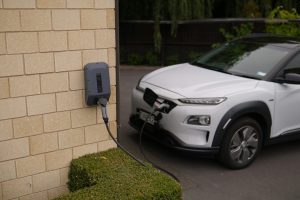Reducing Emissions: How Hybrid Technology Helps Meet Regulations
In recent years, reducing emissions has become a top priority for governments around the world. As our planet continues to face the effects of climate change, stricter regulations have been put in place to limit harmful emissions from various industries. One such industry is the automotive industry, specifically in the area of transportation. Fortunately, advancements in technology have led to the development of hybrid vehicles, which have proven to be an effective solution in meeting these regulations. In this article, we will delve into the ways in which hybrid technology is helping to reduce emissions and meet regulations, paving the way towards a more sustainable future.
Understanding Hybrid Technology
Hybrid technology combines the use of both a conventional gasoline engine and an electric motor to power a vehicle. These two power sources work together to provide improved fuel efficiency and reduced emissions. Unlike traditional vehicles that solely rely on gasoline, hybrid vehicles are equipped with a battery pack that can be charged through regenerative braking, electricity generated from the gasoline engine, or by plugging it into an external power source.
Reducing CO2 Emissions
One of the main ways in which hybrid technology contributes to reducing emissions is by reducing the amount of carbon dioxide (CO2) emitted by vehicles. CO2 is a greenhouse gas that contributes to global warming and is a major contributor to air pollution. Traditional gasoline engines emit a high amount of CO2 while hybrid vehicles emit significantly less due to their use of electric power. In fact, studies have shown that hybrid vehicles emit up to 40% less CO2 than conventional vehicles.
Lowering Fuel Consumption
Reducing emissions also goes hand in hand with reducing fuel consumption. With the rising prices of gasoline and the growing concern for the environment, finding ways to reduce fuel consumption has become more important than ever. Hybrid vehicles have proven to be highly fuel-efficient, thanks to their use of both gasoline and electric power. The electric motor can power the vehicle at low speeds, while the gasoline engine takes over at higher speeds. This dual power source results in a significant reduction in fuel consumption, ultimately reducing emissions.
The Benefits of Hybrid Vehicles
Meeting Emission Standards
As governments around the world implement stricter regulations on emissions, automakers are under pressure to meet these standards. This is where hybrid technology comes in. Many countries offer incentives or tax breaks for hybrid vehicle owners, making them more appealing to consumers. Additionally, with the use of hybrid technology, car manufacturers are able to meet these regulations and avoid hefty fines for not complying.
Cost Savings for Consumers
Apart from being environmentally friendly, hybrid vehicles also offer cost savings for consumers. With their improved fuel efficiency, hybrid vehicles can save drivers hundreds of dollars in fuel costs each year. In addition, governments may offer tax incentives or rebates on the purchase of hybrid vehicles, making them a financially sound choice for consumers.
Improved Technology
As the demand for hybrid vehicles increases, so does the development of technology. This leads to improved hybrid options, such as plug-in hybrids and electric vehicles, which are even more environmentally friendly. These advancements may also lead to the improvement of battery technology, making it cheaper and more efficient, ultimately benefiting the automotive industry as a whole and helping to reduce emissions in the long run.
In Conclusion
Reducing emissions is crucial in the fight against climate change, and hybrid technology is playing a vital role in achieving this goal. With the use of both gasoline and electric power, hybrid vehicles are able to significantly reduce emissions and fuel consumption, all while meeting strict regulations. As we continue to see advancements in hybrid technology, it is clear that the future of transportation is becoming more sustainable and eco-friendly.










